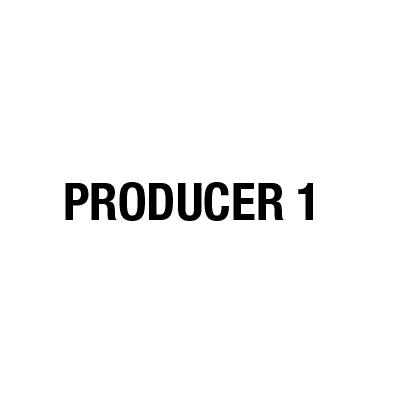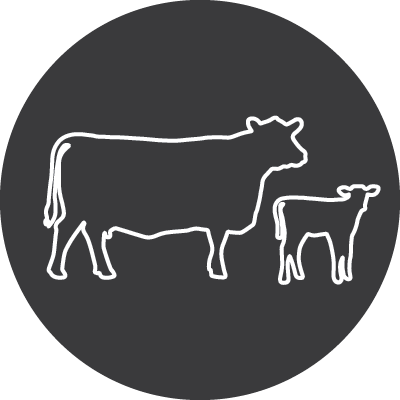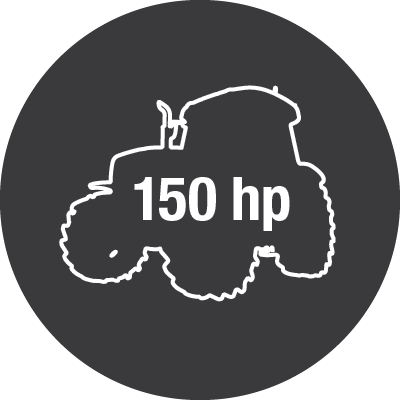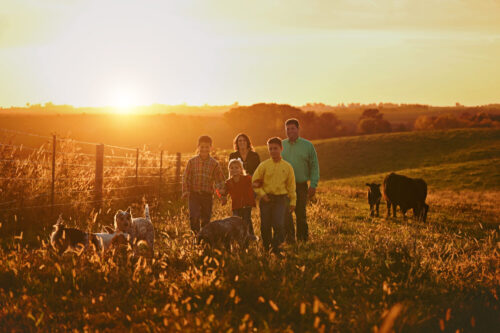
Find the right vertical mixer for your operation
August 2022
Profit margins can be tight on a farming operation, and they can be even tighter if you’re not maximizing your herd’s time at the bunk. Free-choice feeding is typically the greatest expense cattle producers face. You could make a major difference in your overall feed costs by taking a closer look at how you’re distributing feed to your herd. A vertical feed mixer may be a solution to help reduce feed waste for your operation.
“Vertical mixers can help eliminate waste,” says Vermeer Territory Manager Jordan Schuler. “There’s a standard 40% waste factor for round bales when it comes to free-choice feeding, but with a vertical mixer we can be more particular about what we feed – from the front of the bunk line to the end.”
The performance advantages of a vertical mixer help make feed go further. Here are three reasons why a vertical mixer might be the machine to consider for your operation:
3 reasons to use a vertical mixer
- Help prevent costly feed waste. Feeding data shows up to 9 lb (4.1 kg) of feed is wasted per animal each day when free-choice feeding.* That cost can add up quickly, even when feeding part of the year and grazing during the spring and summer.
“With that vertical mixer, we can better reduce forage waste compared to just feeding round bales or putting bales into a bale ring,” says Schuler. “Between overeating or forage getting trampled into the ground, a vertical mixer is better equipped to maximize forage efficiency.”
- Help improve ration quality with various feedstuffs. By transitioning from free-choice hay feeding to an optimized mixed ration or a complete ration, you can feed with lower-cost feedstuffs and change your mix based on feed availability and nutritional needs.
“Cost efficiency comes in again by being able to use a variety of feedstuffs,” says Schuler. “Almost any feedstuff used in the cattle or dairy world can go into a vertical mixer in bulk and it will mix it into a desirable feed.”
- Deliver a consistent ration each day. When delivering an optimal total mixed ration, it’s important to use equipment that processes, thoroughly mixes and delivers without increasing your labor requirements.
“The vertical mixers are continuously forcing feed to move throughout the mixer so it doesn’t get stagnant and nutritional consistency is met,” Schuler adds.
Vermeer vertical mixers are available in a range of capacities, but how can you know which is the best for your operation? Here are some questions to help you make your decision.
Which vertical mixer is best for your operation?
Vermeer offers four single-screw vertical mixers, seven twin-screw models and one triple-screw model. To determine the best vertical feed mixer for your operation, Schuler says to start with these three questions before you purchase any vertical mixer purchase:
- “Will you need to process round bales larger than 5 ft X 4 ft (1.5 m X 1.2 m)?” If so, you’ll need at least a 500 ft3 (14.2 m3) machine, explains Schuler.
- “What do you have for a tractor?” Schuler says, knowing this will point you in the right direction as you will need a certain amount of horsepower to be able to run the mixer.
- “Do you currently have a mixer and, if so, what size is it?” Schuler says, “This is important because some might be looking for a bigger machine, or even looking to go smaller.”
Also, consider the loading height of the mixer to verify it’s compatible with your equipment and any height restrictions on your operation.
| MODEL | CAPACITY | PTO HORSEPOWER | LOADING HEIGHT |
| Vermeer VS350 single-screw vertical mixer | 350 ft3 (9.9 m3) | 100 hp (75 kW) | 106 in (269 cm) |
| Vermeer VS420 single-screw vertical mixer | 420 ft3 (11.9 m3) | 120 hp (89 kW) | 110 in (280 cm) |
| Vermeer VS510 single-screw vertical mixer | 510 ft3 (14.2 m3) | 130 hp (97 kW) | 120 in (300 cm) |
| Vermeer VS570 single-screw vertical mixer | 570 ft3 (17 m3) | 150 hp (110 kW) | 125 in (318 cm) |
| Vermeer VSR440 single-screw vertical mixer | 440 ft3 (12 m3) | 120 hp (89 kW) | 109 in (277 cm) |
| Vermeer VSR540 single-screw vertical mixer | 540 ft3 (15 m3) | 130 hp (97 kW) | 120 in (305 cm) |
| Vermeer VT600 twin-screw vertical mixer | 600 ft3 (17 m3) | 150 hp (110 kW) | 109 in (277 cm) |
| Vermeer VT660 twin-screw vertical mixer | 660 ft3 (18.1 m3) | 170 hp (130 kW) | 105 in (267 cm) |
| Vermeer VT750 twin-screw vertical mixer | 750 ft3 (21.2 m3) | 180 hp (130 kW) | 123 in (312 cm) |
| Vermeer VT830 twin-screw vertical mixer | 830 ft3 (23.4 m3) | 180 hp (130 kW) | 116 in (295 cm) |
| Vermeer VT970 twin-screw vertical mixer | 970 ft3 (27.5 m3) | 200 hp (150 kW) | 127 in (323 cm) |
| Vermeer VT1150 twin-screw vertical mixer | 1,150 ft3 (32.6 m3) | 220 hp (160 kW) | 139 in (353 cm) |
| Vermeer VT1310 twin-screw vertical mixer | 1,310 ft3 (37.1 m3) | 230 hp (170 kW) | 155 in (394 cm) |
| Vermeer VX1690 triple-screw vertical mixer | 1,690 ft3 (47.9 m3) | 250 hp (190 kW) | 143 in (363 cm) |
Take your ration into consideration
Which vertical mixer is the best for your operation also depends on what you’ll be mixing. When you’re dealing with large round bales, consider this:
- For processing 5 ft X 6 ft (1.5 m X 1.8 m) round bales, you’ll likely want the VS510 single-screw or larger.
- For processing 4 ft X 5 ft (1.2 m X 1.5 m) round bales, you’ll likely want the VS420 single-screw or larger.
When you have heavy, dense rations, you should consider a model that features high-screw rpm while meeting your horsepower and loading-height requirements:
- VS350 single-screw
- VS420 single-screw
- VT660 twin-screw
For help determining which mixer is best for your operation, review these examples to narrow down the selection based on which one is closest to yours.
Four common producer scenarios and the Vermeer mixer best for each





Producer #1
- 200 – 300 head finishing feedlot
- Looking to replace a 300-ft3 (8.5-m3) reel mixer and wants to stay the same size, though not opposed to more capacity
- Uses a skid steer with a max loading height of 112 in (285 cm) to load the vertical mixer
- Uses a 120-hp (89-kW) tractor
This producer would benefit from the VS350 or VS420 single-screw vertical mixer. A high screw rpm will help with cleanout of dense feedlot rations. It’s roughly the same size as a reel mixer and it has a loading height of 106 in (269 cm) (VS350) or 110 in (280 cm) (VS420). Their tractor has adequate horsepower for both.





Producer #2
- 120 head cow/calf operation that calves in the spring
- Has never owned a vertical mixer but looking to use a wider variety of feedstuffs
- Does not currently have a way to grind bales and needs to be able to process a 6 ft X 5 ft (1.8 m X 1.5 m) bale in the mixer
- Uses a 120-PTO hp (89-kW) tractor
This producer should consider the VS510 single-screw vertical mixer. It’s the right size for the number of cows they have, and it is the smallest mixer that will also process a large round bale. Their tractor has adequate horsepower for this mixer.





Producer #3
- 100 cow/calf pairs and a backgrounding yard of 400-500 head.
- Cleanout is extremely important due to multiple feeding variations each day. Would like an “easy” target for a 9-ft (3-m) wide loader bucket.
- Liquid feed spout is 108 in (274 cm) tall as a loading height restriction.
- Uses a 150-PTO hp (110-kW) tractor.
This producer would benefit from the VT660 twin-screw vertical mixer. It has maximized cleanout due to three points of contact with the tub floor. The twin-screw mixer provides ample room for loading and features a low 106-in (269-cm) loading height for liquid feed. Horsepower requirements are met with their current tractor.





Producer #4
- 700 head cow/calf operation.
- Replacing a 600-ft (183-m) single-screw vertical mixer and wants to reduce number of loads. Processes two large round bales occasionally.
- Wants to pull a mixer more smoothly on broken ground conditions because in the winter months, all feeding is done on the range/pasture into tires.
- Uses a 180-PTO hp (130-kW) tractor.
This producer should consider the VT830 twin-screw vertical mixer for its large capacity to reduce the number of loads per day. It also can configure axle and tires to adapt to ground conditions and to process large round bales.
Now that you’ve got an idea of which vertical feed mixer might work the best for you, talk to your local Vermeer dealer. They can work with you to understand all your needs and find the mixer that fits your budget.
“If efficiency is important to you, there’s a Vermeer mixer that can be a good fit for your operation.”
*Tyler Long, Purina Animal Nutrition
Vermeer Corporation reserves the right to make changes in engineering, design and specifications; add improvements; or discontinue manufacturing at any time without notice or obligation.
Equipment shown is for illustrative purposes only and may display optional accessories or components specific to their global region.
Please contact your local Vermeer dealer for more information on machine specifications.
Vermeer and the Vermeer logo are trademarks of Vermeer Manufacturing Company in the U.S. and/or other countries.
© 2022 Vermeer Corporation. All Rights Reserved.






